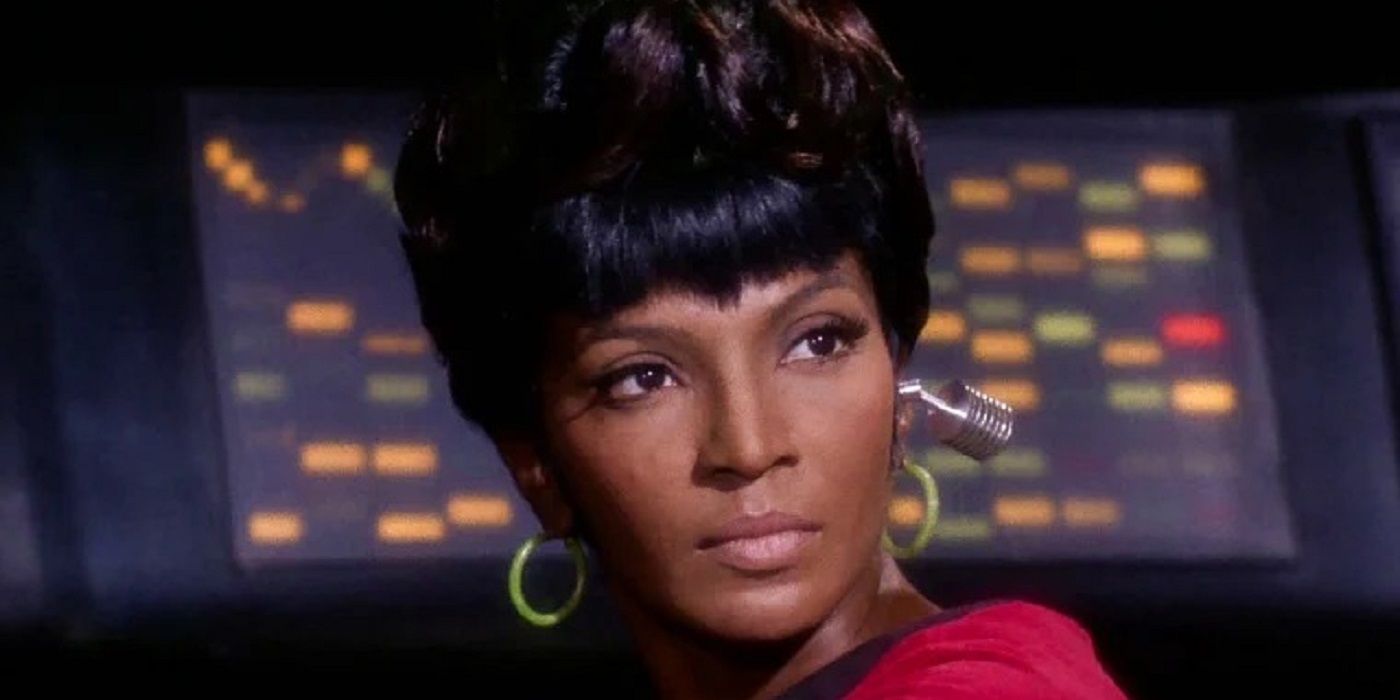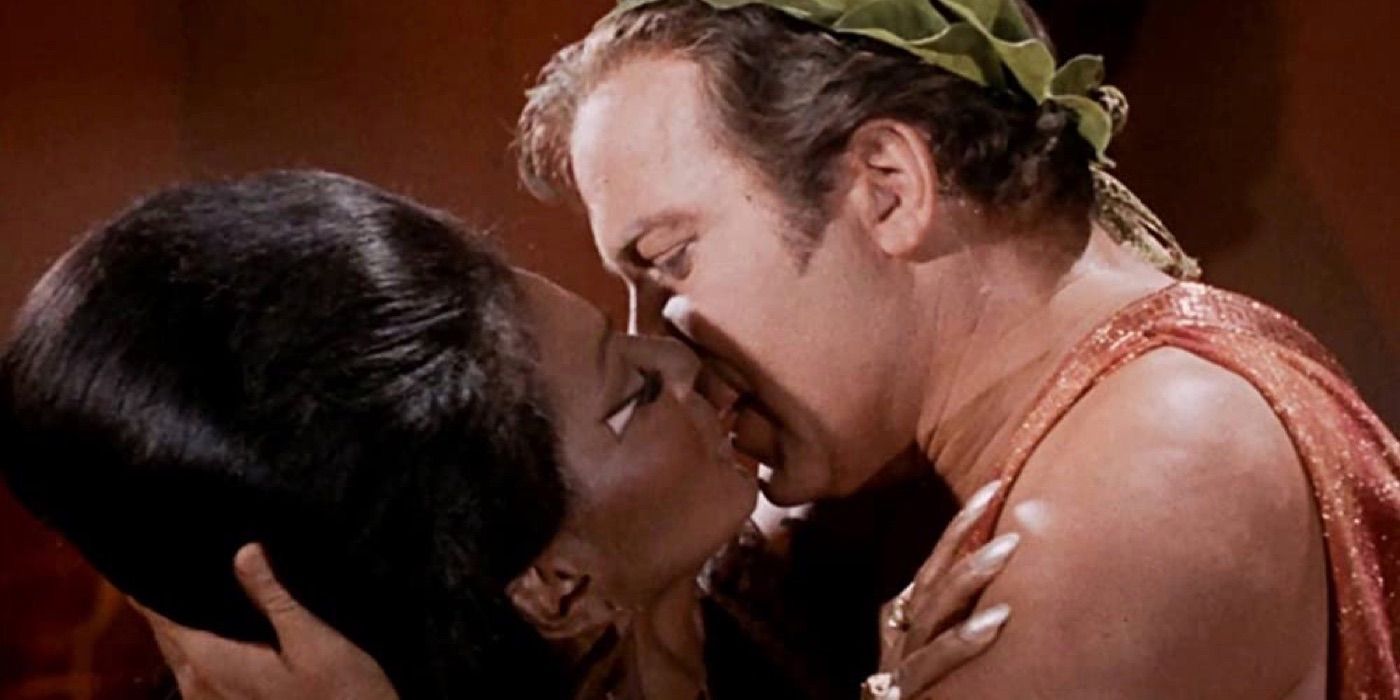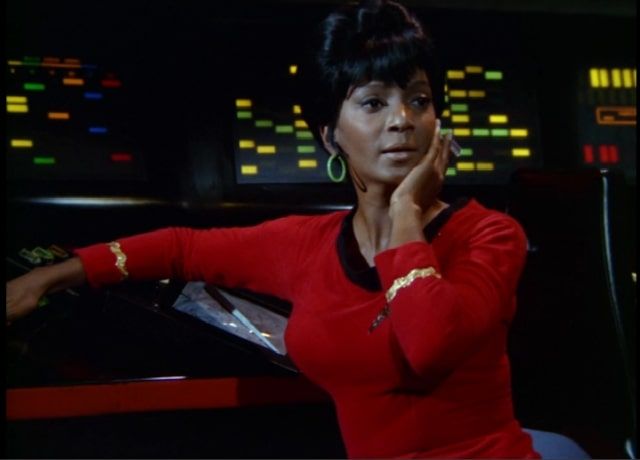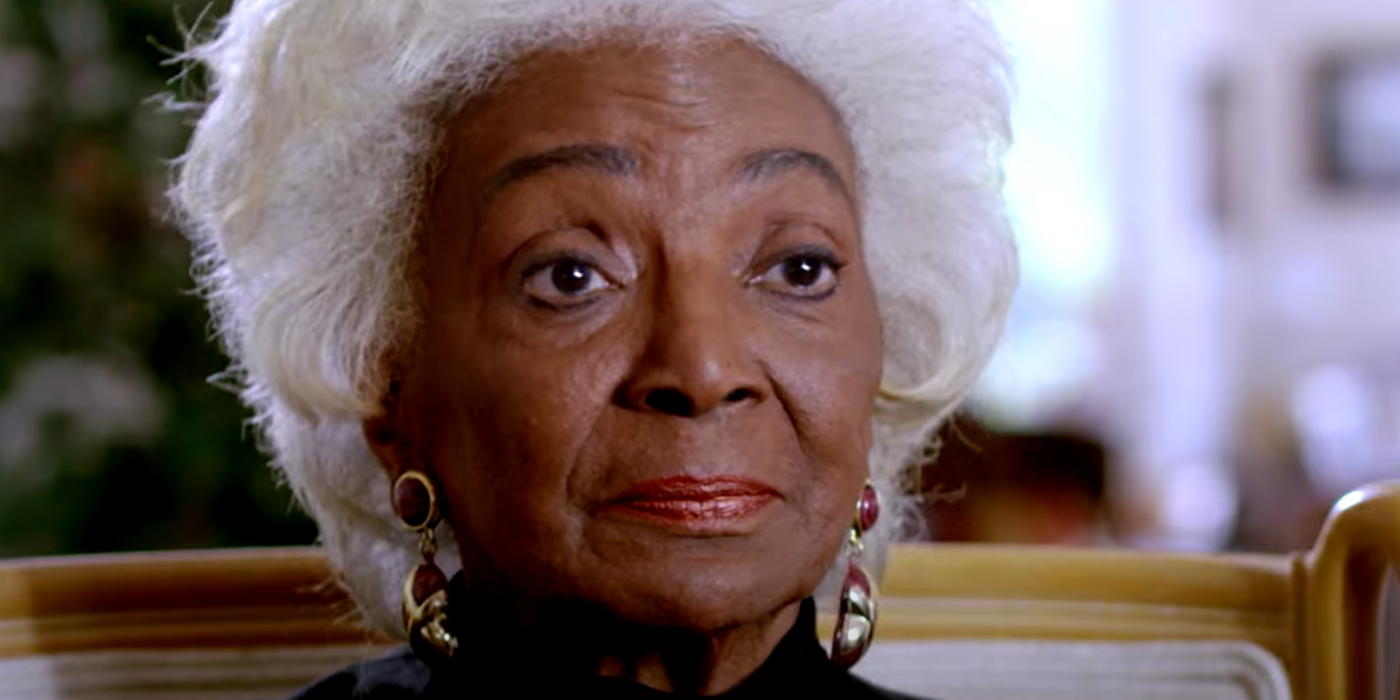Star Trek: The Original Series aired for three seasons between 1966 and 1969, and in the meantime broke essential ground not only in science fiction and fandom, but also in civil rights and real scientific development. Iconic Nichelle Nichols, who died last week at the age of 89, played communications officer Lt. Nyota Uhura during the entirety of the show’s run, and was at the heart of the progress that the show represented.
In Season 3, Episode 5, "Is There No Truth In Beauty?" Spock (Leonard Nimoy) himself exclaims his admiration for “Uhura! Whose name means freedom.” A feminized version of the Swahili word for freedom, her name is more than appropriate. One of the main cast members and the ship’s fourth in command, she lit the imagination of viewers with a vision of a future that didn’t discriminate; where one could be celebrated for one’s talents, regardless of race or gender.
It was a groundbreaking thought that, in the 23rd century, mankind had moved beyond prejudice, especially in the 1960s when Star Trek first aired. The Civil Rights movement was in full swing. The first season arrived in 1966, just two years after the Civil Rights Act of 1964 and one year after the Voting Rights Act of 1965. Malcolm X had just been assassinated. In a time when roles for black actors were often limited to stereotypes, Nichelle Nichols ’ Lt. Uhura was the epitome of competence, intelligence, and glamour on television. Uhura’s historic kiss with Captain Kirk (William Shatner) in the Season 3 episode, "Plato’s Stepchildren," was one of the first interracial kisses in television history, and the first onscreen kiss between a Black woman and a white man. "Plato’s Stepchildren" aired in November 1968, just seven months after Rev. Dr. Martin Luther King Jr.’s assassination.
Dr. King was actually an essential part of keeping Nichelle Nichols onscreen as Lieutenant Uhura. There were a variety of reasons for her to go. Nichols’ lines were consistently getting cut, and she had to endure racism behind the scenes. But most of all, she wanted to return to “her first love, which was musical theater.” Nichols was a trained dancer and singer, as well as an actor. Fans of the original series remember Uhura for her musical talent, and some of the show’s most memorable scenes showcase her singing. Toward the end of the first season, Nichols was offered a significant role in an upcoming Broadway production. She wanted to take it, and even handed in her resignation letter to Star Trek creator Gene Roddenberry. He told her to take the weekend to reconsider, a request she agreed to though she had no intention of changing her mind. That Saturday, she was a celebrity guest at a fundraiser for the NAACP. In an interview with the Television Academy, Nichols recalls that the organizer approached her and said “there’s someone here who is your biggest fan…and he’s desperate to meet you.” Nichols was astonished to find that this fan was Dr. Martin Luther King.
Nichols recounts that Dr. King told her that not only he, but his entire family were avid fans of hers, telling her how Star Trek was the only show his wife would allow their children to stay up and watch past their bedtime. During their conversation, as soon as she revealed she was leaving the show, he told her she couldn’t — that, with Uhura, “for the first time on television we will be seen as we should be seen every day: as intelligent, quality, beautiful people who can sing, dance and…go into space. Who can be lawyers, who can be teachers, who can be professors, who are in this day and yet you don’t see it in television until now.” That Monday, Nichols retracted her resignation. She stayed for all three seasons and returned for both the animated series and the movies, becoming an icon not only of landmark science fiction storytelling but of civil rights with her history-making role onscreen.
After Star Trek’s initial run, Nichols continued to break boundaries — both on earth and beyond. Ten years after the show ended, she began some of her most groundbreaking work as a recruiter and advocate with NASA. The 2021 documentary Woman in Motion tells the story of Nichols' life, focusing primarily on the way she forever changed the American space program. Her involvement began, in all places, at a Star Trek convention — specifically, the largest ever Star Trek convention, held in 1975. One of the speakers at the convention was NASA's director of science Dr. Jesco von Puttkamer. In the documentary, Nichols recounts the awe she felt listening to his presentation at the convention. She remembers “something happening, back there, saying, Humankind had stepped on the moon. It wasn’t just Neil Armstrong or Buzz Aldrin. I stepped on the moon.” At the same time, however, she noted that out of that awe came “a feeling of disenfranchisement." Neither as a Black person, nor as a woman, did she see anyone like herself in the current space program. As Uhura, she represented what the future of space exploration — and America’s space program — could look like. Now, she “wanted to be there, not in fantasy. Not 300 years from today, but now.”
In the 1970s, NASA was recruiting a new class of astronauts for its space shuttle program. They hoped for more women and more people of color among their applicants, but were disappointed at how few responded. The lack of response made sense, as NASA’s credibility was very low with women and minorities. Quite simply, it didn’t seem that it was actually possible that they were going to recruit a new class of astronauts that wasn't completely made up of white men. Nichelle Nichols was already very vocal about the need for diversity in the future of space exploration; NASA consulted her, then requested that she give a speech encouraging recruitment. Nichols agreed under the condition that the recruitment would be under the name of her company, Women in Motion, in cooperation with NASA.
Nichols underwent a grueling four-month recruiting program in which she traveled around the country in order to convince women and minorities to apply to the space shuttle program. She appeared on television in promotional videos for NASA and spoke on talk shows about the recruitment program. The documentary notes that when Nichelle began her work, NASA had only received 1,500 applications over the past eight months, fewer than 100 of which were from women and only 35 of which were from minorities. When she finished four months later, NASA had over 8,000 applications: 1,649 from women and over 1,000 from minorities. Sally Ride, Guion S. Bluford Jr., Anna Fisher, and Judith Resnik were among the 35 astronauts chosen for that new class, as well as Ellison Onizuka, Frederick Gregory, and Ronald McNair. Sally Ride would go on to be the first American woman in space, as well as the youngest person ever to go to space. Guion S. Bluford Jr. would become the first Black astronaut in space, followed by Ronald McNair and Fred Gregory. Ellison Onizuka was the first Asian American in space. In September 17, 1976, the first orbiter of the Space Shuttle system was rolled out. Fittingly, both in testament to Nichols’ involvement in the program and to the increased diversity in the new class, this first orbiter was called the Enterprise.
Both with her role as Uhura and in her work for NASA, Nichelle Nichols brought the vision of the future in Star Trek closer to the present. She continued to collaborate with NASA for decades in both STEM education and outreach. Astronaut Mae Jemison, the first African American woman to travel in space, directly cites Uhura as her inspiration to become an astronaut. Jemisen even went on to appear in an episode of Star Trek: The Next Generation. To this day, NASA employees such as flight systems engineer Tracy Drain point to Uhura as one of the reasons she decided she wanted to work for NASA. Inspiring generations, Nichelle Nichols became the symbol of what was possible both for humanity and for individuals to achieve, both socially and scientifically. Both in science fiction and reality, in our world and in outer space, Nichelle Nichols' life is a reminder to live courageously and “to boldly go where no one has gone before.”




